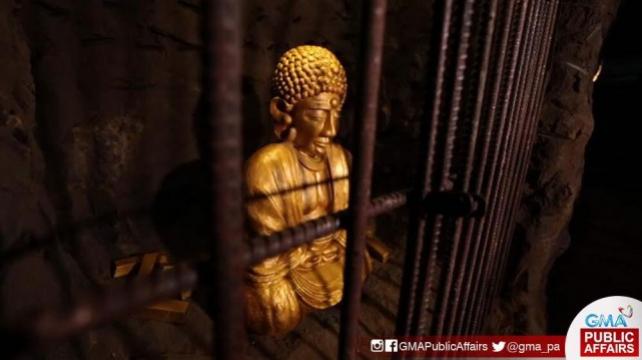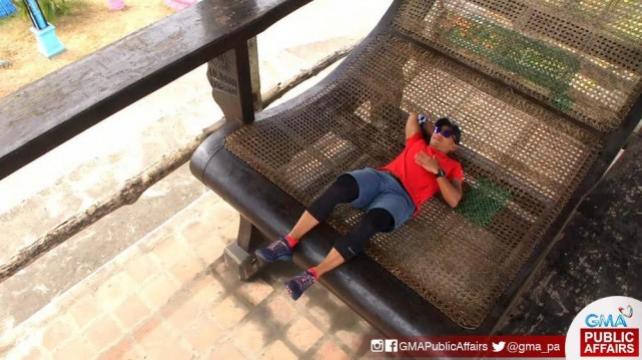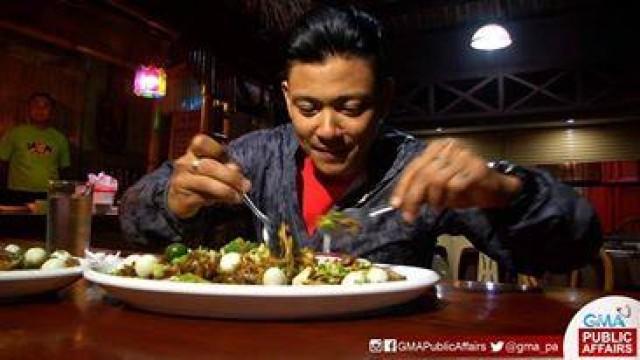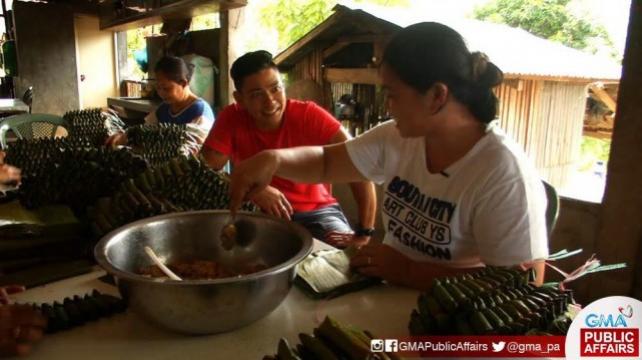A ‘Biyahe ni Drew’ itinerary: Beyond the vast rice and corn fields of Isabela
Left or right, wherever you look here in Isabela, you will be greeted by vast fields of both rice and corn. The province is the top rice producer for Northern Luzon and top corn supplier nationwide, which helped it earn the title of both the "Rice Granary of Northern Luzon" and "Corn Capital of the Philippines.’" But aside from being known as an agricultural haven, the people of Isabela made sure that they have little surprises to offer that tourists like you will surely feast upon.

HOW TO GET THERE:
If you don’t feel like driving 380 kilometers to Isabela, you can take a ten to eleven-hour provincial bus ride from Kamias, Quezon City straight to Cauayan, Isabela for just P650.00 per person. You can easily book your ride as this is available in huge bus companies such as Victory Liner, Five Star Bus and Florida Transport. But if you want to immediately get there to start your adventure, you can book a flight to Cauayan, Isabela with an approximate travel time of 3 hours and 30 minutes.
Tip: Just make sure to book early as there is only one flight that is bound to Isabela every single day.
WHERE TO STAY:
You can check in at JAPI Traveller’s Hotel and Restaurant located at Maharlika Hi-way, Silawit, Cauayan City, Isabela. It’s just along the highway and can be easily found if you opt to take the bus. Meanwhile, if you take the plane, JAPI’s can pick you up for free at Cauayan Domestic Airport which is just 10 minutes away. Their room prices are also budget-friendly for P850.00 to P5200.00 per room. By adding P220.00 to your daily bill, you can also enjoy their breakfast buffet, one meal to cross out from your list.

WHERE TO GO:
Japanese Tunnel
By visiting the Japanese Tunnel, you can travel back in time here in Ilagan, Isabela. Inside the tunnel, life-sized models of the jails used in capturing bandits can be freely explored. You can also check out the replicas of the mysterious Yamashita treasures and the monetary funds they used back in the Japanese era days. You need not to worry about the price as this little time traveling experience only costs P30.00.

Biggest ‘Butaka’ in the world
At the center of the busy town of Ilagan, it’s impossible for you to miss their ‘Butaka’ or rocking chair that is displayed along the highway and in front of their municipal hall.
With its size of 11-feet high and about 10-feet wide, it was tagged as ‘Butaka ni Goliath’ by the Guinness World of Records in 2003. Making it the biggest ‘Butaka’ in the world. You can go ahead and take pictures while seating on the ‘Butaka’ but climbing up isn’t an easy task. So, good luck, Biyaheros!

Ilagan Sanctuary Zoo
Just a few minutes away from the ‘Butaka’ display is where you can unleash your inner courage. Tourists are allowed to take a photo with the stars of Ilagan Sanctuary Zoo, Maria Jesusa and Jomari. Two pythons that are about 30-feet long and weigh 200-lbs. each. During the photo-op, you will be asked to carry the python in your arms with nine other people. So make sure to come in groups as this might be less scary!
Mabuwaya Foundation
If your python experience wasn’t thrilling enough for you, head over to the town of San Mariano. This is where you’ll find Mabuwaya Foundation which aims to take away the people’s fear of crocodiles by opening up to the public and offering interactive activities. Tourists are allowed to get close and touch the baby crocodiles in their rearing station. No entrance fee is needed to experience this but some donations encouraged so the foundation can buy school supplies for the children of Isabela through the CROCS program or Crocodiles in the River and our Children in the School. See, if you decide to check this place out, you won’t only be helping the crocodiles but also several children of the province.
WHAT TO EAT:
Pansi Cabagan
Never miss the chance to taste the authentic Pansi Cabagan here in Isabela. Its price ranges from P35.00 to P60.00 per order. But if you come in groups, it is recommended to order the one good for 10-15 people for just P500.00. When it comes to how it looks, Pansi Cabagan is almost similar to the typical Pancit Canton, but instead of chicken, quail eggs and Lechon Kawali are used as main toppings.

You definitely read that right, Biyaheros, because for the Isabelenos, it’s Pansi not Pancit. So make sure that you say it right when you order or you might not get it!
Corn Products
You can check out Mangi Food House in Tumauini, Isabela for a variety of corn delicacies. One of their most popular product that is made out of corn is the corn coffee. According to the locals, since corn is very abundant in their province, their ancestors decided to roast it instead of coffee beans. For just P20.00, this hot beverage can be taken at any time of the day, even when you’re about to sleep because of the lack of caffeine.
Aside from corn coffee, they also have nachos, corn shake and pastillas that are all made of corn. If you happen to pass by their store, make sure to buy a piece or two of their delicacies for your family back home.
WHAT TO BRING HOME:
In every trip, the goodies you bring are what’s important to the people back home. Aside from the corn products you had in Tumauini, you can also bring home their own version of suman, the ‘inatata.’ According to the locals, ‘inatata’ came from the words ‘ina’ and ‘tatay,’ a reminder that this delicacy is made out of the love and hardship of their parents.

‘Inatata’ is made out of cooked sticky or glutinous rice and sweetened with sugar which are eventually rolled into cylinders. It is wrapped in banana leaves and then tied into batches of 10 before being steamed for five minutes. The finished product will surely make you think of how similar it looks to ammunition belts of a machine gun. Each ‘belt’ of ‘inatata’ is sold for P30.00 and would last for three to five days.
The province of Isabela may not have action-packed activities or very popular places that can attract visitors to give it a chance. But what’s truly notable here is the effort exerted by Isabelenos in treasuring and savoring the gift that the nature luckily gave them. Eventually making it worthwhile to those who chose to experience the simple beauty it has to offer.---Sarah Jean Sarte/BMS, GMA Public Affairs





